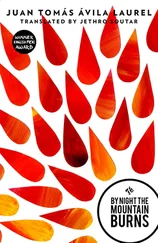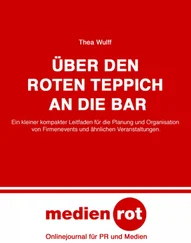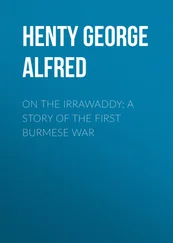Babur - The Bābur-nāma
Здесь есть возможность читать онлайн «Babur - The Bābur-nāma» — ознакомительный отрывок электронной книги совершенно бесплатно, а после прочтения отрывка купить полную версию. В некоторых случаях можно слушать аудио, скачать через торрент в формате fb2 и присутствует краткое содержание. Жанр: foreign_antique, foreign_prose, на английском языке. Описание произведения, (предисловие) а так же отзывы посетителей доступны на портале библиотеки ЛибКат.
- Название:The Bābur-nāma
- Автор:
- Жанр:
- Год:неизвестен
- ISBN:нет данных
- Рейтинг книги:4 / 5. Голосов: 1
-
Избранное:Добавить в избранное
- Отзывы:
-
Ваша оценка:
- 80
- 1
- 2
- 3
- 4
- 5
The Bābur-nāma: краткое содержание, описание и аннотация
Предлагаем к чтению аннотацию, описание, краткое содержание или предисловие (зависит от того, что написал сам автор книги «The Bābur-nāma»). Если вы не нашли необходимую информацию о книге — напишите в комментариях, мы постараемся отыскать её.
The Bābur-nāma — читать онлайн ознакомительный отрывок
Ниже представлен текст книги, разбитый по страницам. Система сохранения места последней прочитанной страницы, позволяет с удобством читать онлайн бесплатно книгу «The Bābur-nāma», без необходимости каждый раз заново искать на чём Вы остановились. Поставьте закладку, и сможете в любой момент перейти на страницу, на которой закончили чтение.
Интервал:
Закладка:
The later copy made in Humayun’s first decade is Haidar Mirza’s ( infra ).
IV
Muhammad Haidar Mirza Dughlat’s possession of a copy of the Autobiography is known both from his mention of it and through numerous extracts translated from it in his Tarikh-i-rashidi . As a good boy-penman (p. 22) he may have copied down to 1512 (918) while with Babur (p. 350), but for obtaining a transcript of it his opportunity was while with Humayun before the Timurid exodus of 1541. He died in 1551; his Codex is likely to have found its way back from Kashmir to his ancestral home in the Kashghar region and there it may still be. ( See T.R. trs. Ney Elias’ biography of him).
V
The Elphinstone Codex 13 13 See Index s. n. and III ante and JRAS. 1900-3-5-6-7.
has had an adventurous career. The enigma of its archetype is posed above; it may have been copied during Akbar’s first decade (1556-67); its, perhaps first, owner was a Bai-qara rebel (d. 1567) from amongst whose possessions it passed into the Royal Library, where it was cleared of foreign matter by the expunction of Humayun’s marginal notes which its scribe had interpolated into its text. At a date I do not know, it must have left the Royal Library for its fly-leaves bear entries of prices and in 1810 it was found and purchased in Peshawar by Elphinstone. It went with him to Calcutta, and there may have been seen by Leyden during the short time between its arrival and the autumn month of the same year (1810) when he sailed for Java. In 1813 Elphinstone in Poona sent it to Erskine in Bombay, saying that he had fancied it gone to Java and had been writing to ‘Izzatu’l-lah to procure another MS. for Erskine in Bukhara, but that all the time it was on his own shelves. Received after Erskine had dolefully compared his finished work with Leyden’s (tentative) translation, Erskine sadly recommenced the review of his own work. The Codex had suffered much defacement down to 908 (1502) at the hands of “a Persian Turk of Ganj” who had interlined it with explanations. It came to Scotland (with Erskine?) who in 1826 sent it with a covering letter (Dec. 12th, 1826), at its owner’s desire, to the Advocates’ Library where it now is. In 1907 it was fully described by me in the JRAS.
VI
Of two Waqi’at-i-baburi (Pers. trs.) made in Akbar’s reign, the earlier was begun in 1583, at private instance, by two Mughuls Payanda-hasan of Ghazni and Muhammad-quli of Hisar. The Bodleian and British Museum Libraries have copies of it, very fragmentary unfortunately, for it is careful, likeable, and helpful by its small explanatory glosses. It has the great defect of not preserving autobiographic quality in its diction.
VII
The later Waqi’at-i-baburi translated by ‘Abdu’r-rahim Mirza is one of the most important items in Baburiana, both by its special characteristics as the work of a Turkman and not of a Persian, and by the great service it has done. Its origin is well-known; it was made at Akbar’s order to help Abu’l-faẓl in the Akbar-nāma account of Babur and also to facilitate perusal of the Babur-nama in Hindustan. It was presented to Akbar, by its translator who had come up from Gujrat, in the last week of November, 1589, on an occasion and at a place of admirable fitness. For Akbar had gone to Kabul to visit Babur’s tomb, and was halting on his return journey at Barik-ab where Babur had halted on his march down to Hindustan in the year of victory 1525, at no great distance from “Babur Padshah’s Stone-heap”. Abu’l-faẓl’s account of the presentation will rest on ‘Abdu’r-rahim’s information (A.N. trs. cap. ci). The diction of this translation is noticeable; it gave much trouble to Erskine who thus writes of it ( Memoirs Preface, lx), “Though simple and precise, a close adherence to the idioms and forms of expression of the Turki original joined to a want of distinctness in the use of the relatives, often renders the meaning extremely obscure, and makes it difficult to discover the connexion of the different members of the sentence. 14 14 Here speaks the man reared in touch with European classics; (pure) Turki though it uses no relatives (Radloff) is lucid. Cf. Cap. IV The Memoirs of Babur.
The style is frequently not Persian… Many of the Turki words are untranslated.”
Difficult as these characteristics made Erskine’s interpretation, it appears to me likely that they indirectly were useful to him by restraining his diction to some extent in their Turki fettering. – This Turki fettering has another aspect, apart from Erskine’s difficulties, viz . it would greatly facilitate re-translation into Turki, such as has been effected, I think, in the Farghana section of the Bukhara compilation. 15 15 For analysis of a retranslated passage see JRAS. 1908, p. 85.
VIII
This item of work, a harmless attempt of Salim ( i. e . Jahangir Padshah; 1605-28) to provide the ancestral autobiography with certain stop-gaps, has caused much needless trouble and discussion without effecting any useful result. It is this: – In his own autobiography, the Tuzuk-i-jahangiri s.a . 1607, he writes of a Babur-nama Codex he examined, that it was all in Babur’s “blessed handwriting” except four portions which were in his own and each of which he attested in Turki as so being. Unfortunately he did not specify his topics; unfortunately also no attestation has been found to passages reasonably enough attributable to his activities. His portions may consist of the “Rescue-passage” (App. D) and a length of translation from the Akbar-nāma , a continuous part of its Babur chapter but broken up where only I have seen it, i. e. the Bukhara compilation, into (1) a plain tale of Kanwa (1527), (2) episodes of Babur’s latter months (1529) – both transferred to the first person – and (3) an account of Babur’s death (December 26th, 1530) and Court.
Jahangir’s occupation, harmless in itself, led to an imbroglio of Langlés with Erskine, for the former stating in the Biographie Universelle art. Babour, that Babour’s Commentaries “ augmentés par Jahangir ” were translated into Persian by ‘Abdu’r-rahim. Erskine made answer, “I know not on what authority the learned Langlés hazarded this assertion, which is certainly incorrect” ( Memoirs , Preface, p. ix). Had Langlés somewhere met with Jahangir’s attestations? He had authority if he had seen merely the statement of 1607, but Erskine was right also, because the Persian translation contains no more than the unaugmented Turki text. The royal stop-gaps are in Kehr’s MS. and through Ilminski reached De Courteille, whence the biting and thorough analysis of the three “Fragments” by Teufel. Both episodes – the Langlés and the Teufel ones – are time-wasters but they are comprehensible in the circumstances that Jahangir could not foresee the consequences of his doubtless good intentions.
If the question arise of how writings that had had place in Jahangir’s library reached Bukhara, their open road is through the Padshah’s correspondence (App. Q and references), with a descendant of Ahrari in whose hands they were close to Bukhara. 16 16 Tuzuk-i-jahangiri , Rogers & Beveridge’s trs. i, 110; JRAS. 1900, p. 756, for the Persian passage, 1908, p. 76 for the “Fragments”, 1900, p. 476 for Ilminski’s Preface (a second translation is accessible at the B.M. and I.O. Library and R.A.S.), Memoirs Preface, p. ix, Index s. nn. de Courteille, Teufel, Bukhara MSS. and Part iii eo cap.
It groups scattered information to recall that Salim (Jahangir) was ‘Abdu’r-rahim’s ward, that then, as now, Babur’s Autobiography was the best example of classic Turki, and that it would appeal on grounds of piety – as it did appeal on some sufficient ground – to have its broken story made good. Also that for three of the four “portions” Abu’l-fazl’s concise matter was to hand.
Читать дальшеИнтервал:
Закладка:
Похожие книги на «The Bābur-nāma»
Представляем Вашему вниманию похожие книги на «The Bābur-nāma» списком для выбора. Мы отобрали схожую по названию и смыслу литературу в надежде предоставить читателям больше вариантов отыскать новые, интересные, ещё непрочитанные произведения.
Обсуждение, отзывы о книге «The Bābur-nāma» и просто собственные мнения читателей. Оставьте ваши комментарии, напишите, что Вы думаете о произведении, его смысле или главных героях. Укажите что конкретно понравилось, а что нет, и почему Вы так считаете.











